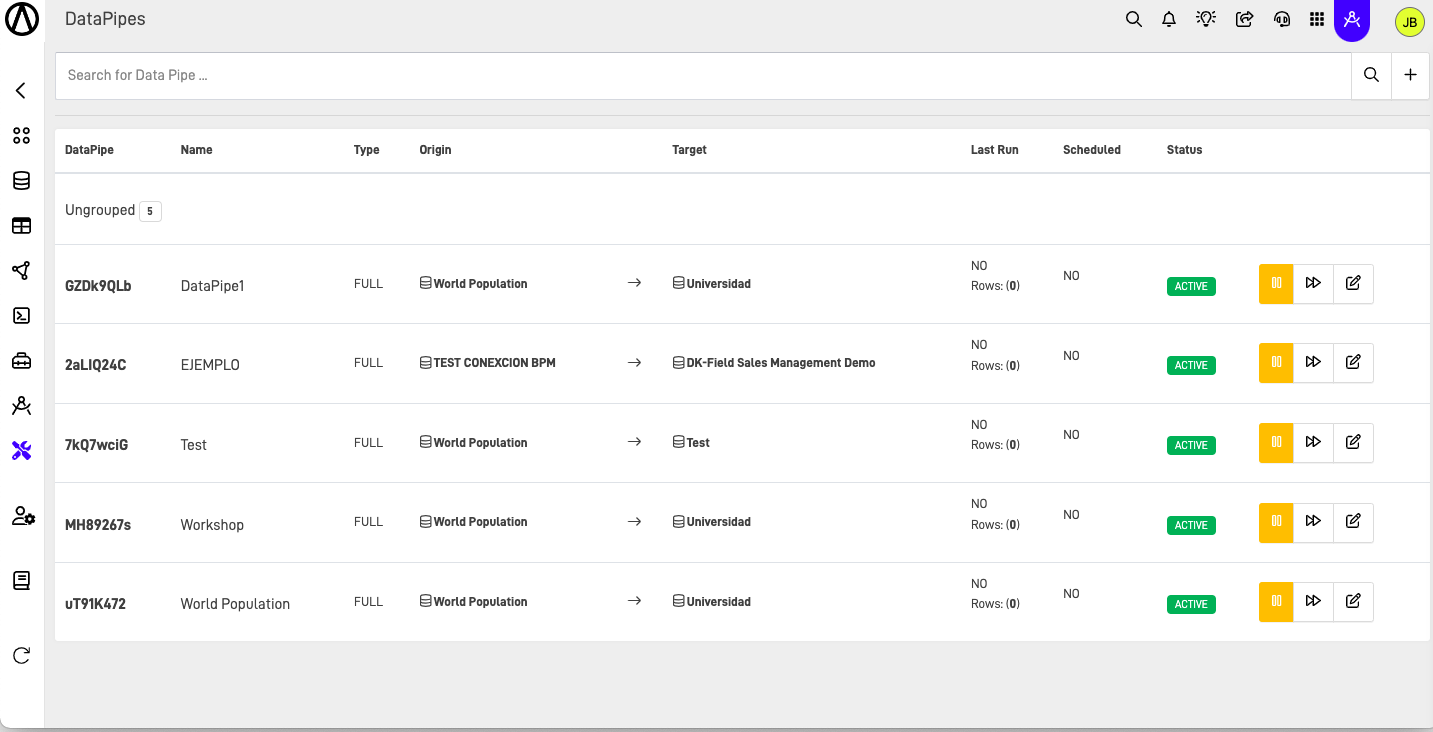Data Pipes
Create raw data extraction from multiple data sources to your data repositories
🔗 DataPipe Overview
DataPipe refers to channels or data flows designed to transfer information between various systems or components. These channels ensure efficient data movement, which can be either unidirectional or bidirectional, playing a crucial role in system connectivity and data synchronization.

🌟 Key Features
1. Data Integration
- Seamless Data Flow: DataPipes are essential for integrating data from multiple sources into a unified system or repository.
- Efficient Management: They enable the smooth transfer of data across different systems, ensuring efficient data management and synchronization.
2. Data Extraction and Synchronization
- Extraction Pipelines: DataPipes allow you to create pipelines that pull data from external sources into repositories.
- Table Mapping: Ensure accurate and consistent data transfer by mapping data tables between source systems and repositories.
- Full and Incremental Updates: DataPipes can extract full copies of data or incremental changes, keeping repositories updated with the latest information.
3. System Connectivity
- Real-Time or Scheduled Transfers: DataPipes establish connections between different systems, enabling real-time or scheduled data exchanges.
- Reliable Synchronization: Ensure consistent and reliable data across all connected systems, supporting synchronization efforts.
DataPipes are essential tools for ensuring smooth data flow, accurate extraction, and real-time synchronization across multiple systems, making them a cornerstone of modern data management.
Updated 2 months ago
What’s Next
